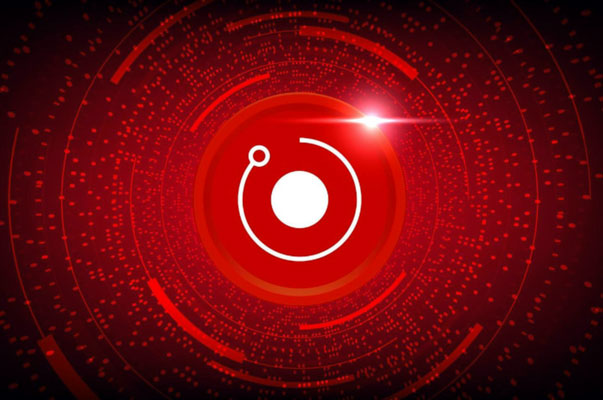The cryptocurrency world is growing rapidly, with new projects emerging nearly every day, promising to revolutionize how we interact with digital assets. However, as the market becomes flooded with new tokens, it becomes even more challenging to identify projects with genuine staying power. One project that has been raising the interest of investors is Render, which takes a unique approach to decentralized GPU rendering by connecting creators with a distributed network of idle GPUs and building a P2P marketplace for rendering tasks. It’s quite a unique concept in the crypto world, so it’s no wonder that it has generated so much excitement.
Render has solidified its position in the crypto universe through a well-established team, real-world applications, and consistent utility across various market cycles. It is now moving beyond 3D rendering after the successful launch of its US-based GPU node trial for AI inferencing, which has achieved 80% utilization. Additionally, Render Network is advancing decentralized AI by utilizing NVIDIA’s RTX 5090 to onboard node operators. If optimism around this token dominates market sentiment and partnerships and usage expand globally, a rise in Render price may be on the horizon. But is Render really a promising project for the future? Continue reading to find out.
Render overview
Render is a decentralized GPU rendering network that aims to connect individuals who need extra computing power with those who already have it. What’s the point of doing this? Making high-quality digital rendering cheaper, quicker, and a lot more accessible. The Render Network was launched by Jules Urbach in 2020, with the goal of addressing a growing issue in digital production: the time-consuming and expensive rendering of 3D visuals. Render brings a solution by letting users tap into unutilized GPU power all across the world.
The Render Network is backed by blockchain technology, which utilizes smart contracts to manage data transfers, payments, and jobs, thereby eliminating middlemen and ensuring faster turnaround times. At the core of the ecosystem is the RENDER token, which powers all transactions and allows users to access GPU power by paying with it. Simultaneously, node operators receive RENDER as a reward for providing their hardware, thereby helping to build a circular economy that benefits both parties.
More than just a token: The impressive features of Render
The potential of Render lies in its very nature, as it serves not only as a token but also as a working system that addresses real issues in digital rendering. You can think of it as Airbnb, except that it is used for graphics power. But let’s get into how it works. Essentially, a digital artist uploads a rendering job, which is then divided into smaller tasks and sent to a network of distributed GPUs. Once the rendering is completed, the artist receives the final files. The best part about this system? It handles everything automatically, leveraging smart contracts to guarantee that the payments are fair and fast.
Decentralization is one of the most notable features of Render, as it relies on many small nodes rather than large data centers, which decreases costs and ensures the network remains flexible. On top of that, it adds security and ensures there isn’t any point of failure because the tasks are distributed.
Render also stands out through the proof of render feature, which is designed to verify the rendering before releasing payment, ensuring a high quality and preventing fraud. This process is recorded on the blockchain and is entirely transparent.
If you think Render’s impressive features end here, you couldn’t be more wrong. The project also supports layer-2 solutions to enhance speed and lower fees, and it is easy to integrate with other platforms due to its compatibility with various protocols and blockchain tools.
Render price predictions for 2025 and beyond: What experts say
If you’re reading this article, you’re probably asking yourself questions such as “Is Render a good investment?”; “What does the future have in store for this project and is it worthwhile?”, and so on. Now, we’re going to examine some predictions for this project, providing you with more insight into the trajectory of Render and whether it’s worth keeping on your radar.
With a credible team, real adoption, and a high liquidity volume, Render distinguishes itself in the crowded AI cryptocurrency landscape, and some experts are optimistic about its future outlook, believing it could rise to a value of as much as $12.205 by the end of the year. However, if it faces tougher opposition from emerging competitors, the price of Render could fall to $3.35. For the next year, market analysts estimate an average price of around $11.205 for the token, while in five years from now, it could range between $28.35 – $85.11.
So, should you buy Render?
This is obviously not a question that someone else can answer on your behalf. What’s your risk profile? What about your timeframe? And how much do you believe in the use case and potential of Render? These are things you should consider when trying to decide whether Render is a good buy for you.
While the project isn’t just hype, like any other cryptocurrency, it isn’t risk-free either, so you must approach it with discipline. Its price depends on several factors, including the price movement of Bitcoin, the AI and GPU narrative, partnerships and integrations, and, of course, the overall health of the crypto market. Even if you believe in the potential of Render, our recommendation is not to expect instant returns and instead use it as a medium for long-term profit: maybe around three years or more. And of course, don’t put all your money into Render alone; instead, choose other assets that allow you to balance your portfolio.
The bottom line
Throughout this blog, we have explored Render from different angles to provide you with a comprehensive understanding of the project. No one can know what the future holds for Render, but it definitely deserves appreciation for its potential to revolutionize digital rendering and the exciting opportunities and solutions it offers in the ever-evolving world of blockchain.











